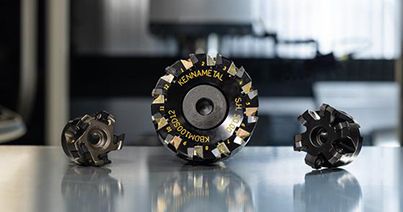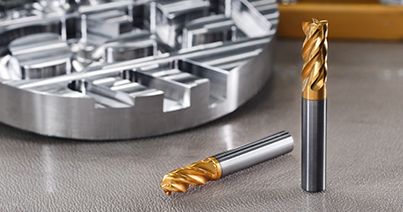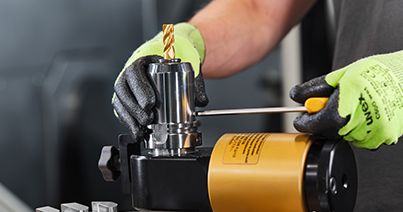
Chatter and vibration are common challenges that can turn a smooth operation into a noisy, inefficient mess, leading to poor surface finishes and reduced tool life. Carbide end mills are particularly prone to damage from chatter. However, with the right strategies, you can elevate your milling game, extend the life of your tools and produce a better-looking part. Let's delve into some practical tips to make your operations smoother and more efficient.
Axial Contact Points
Axial contact points play a significant role in reducing vibration and chatter during machining processes. Finding the correct axial cutting depth that corresponds to a specific number of contact points can help achieve stable cutting conditions. The contact points are established based on the ratio of the axial depth of cut and the pitch of the end mill helix.
Improving Rigidity and Stability:
- Select end mills with a larger core diameter for better stability.
- End mills with a small circular margin can improve dampening.
- Use the shortest possible overhang from the spindle nose to the tool tip.
- Where possible, use stub length end mills to reduce deflection.
- Ensure tool holders are balanced to minimize vibrations including when used with Hydroforce™
- Rework the fixture to hold the workpiece more securely.
- Reprogram the tool path to direct cutting forces into stiffer parts of the workpiece.
- Experiment with spindle speeds and adjust the feed rate accordingly.
Special Considerations for Machining Corners
Chatter often occurs when machining corners due to increased engagement and cutting forces. To mitigate this:
- Use circular interpolation to create a larger corner radius than specified in the part print.
- Remove remaining stock with a smaller end mill using circular interpolation.
Additional Tips
- Ensure starting speeds and feeds are correct for the material and cut.
- Sometimes, increasing the feed or chipload per tooth can help.
- Make the workpiece as rigid and secure as possible.
- Minimize the distance between the workpiece and spindle.
- Select an end mill with more flutes for smoother cutting.
- Ensure the tool run-out is within acceptable limits.
- Verify that the cutting face, relief, fluting and helix angle are suitable for the material.
- If using conventional milling, try switching to climb milling.
By following these tips, you can significantly reduce chatter and improve the quality of your milling operations.

Kennametal GOmill™ PRO Solid Carbide End Mill
Here are Some Kennametal Milling Solutions
Related Articles
- Essential Tips for Troubleshooting Indexable MillingEffective troubleshooting in indexable milling requires a systematic approach to identify and resolve issues. Here’s some advice on common problems.Effective troubleshooting in indexable milling requires a systematic approach to identify and resolve issues. Here’s some advice on common problems.
- Discover the Causes and How to Prevent Work Hardening in MachiningWork hardening of materials is a condition that should be avoided while machining. Learn some great tips on ow to prevent it.Work hardening of materials is a condition that should be avoided while machining. Learn some great tips on ow to prevent it.
- GOmill PRO and HARVI™ II TE: The Perfect Solution for High-Performance Solid End MillingGOmill PRO and HARVI II TE are the perfect solution for solid end milling for improving manufacturing efficiency. Find out more.GOmill PRO and HARVI II TE are the perfect solution for solid end milling for improving manufacturing efficiency. Find out more.
- Grades and coatings for Solid Carbide End Mills Improving the performance of solid carbide end mills is a crucial element for getting the best out of your machining operations. Find out about coatings and grades.Improving the performance of solid carbide end mills is a crucial element for getting the best out of your machining operations. Find out about coatings and grades.



